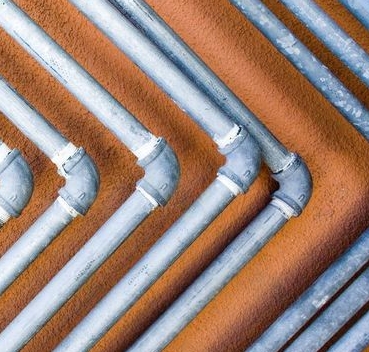Urban Experts Weigh in on How to Fix Nation’s Ailing Infrastructure
Published on by Naizam (Nai) Jaffer, Municipal Operations Manager (Water, Wastewater, Stormwater, Roads, & Parks) in Government
But to urban experts, what would an investment in infrastructure look like?

In the American Society of Civil Engineers’ 2013 report card on infrastructure, the U.S. received a less-than-distinguished grade of D+. While this mark was actually an improvement over the previous report, the Society noted a backlog of overdue maintenance across the country, and a pressing need to modernize the nation’s railways, bridges, roads, electrical grids, drinking water systems, and much more.
They estimated it would take $3.6 trillion by 2020 to get all infrastructure systems up to a modest grade of B.
Throughout the 2016 campaign, President Donald J. Trump pledged to invest more than $500 billion in infrastructure, echoing that sentiment in his inaugural address.
But to urban experts, what would an investment in infrastructure look like?
“When you get this massive investment in items that will affect the economics of a place as well as the physical appearance and how people live and move in this place, you have to do this with a lot of forethought,” says Eugenie Birch, co-director of the Penn Institute for Urban Research (Penn IUR) and Nussdorf Professor of Urban Research in the School of Design. “What are they trying to achieve with this? ... We all know, for example, if you invest in transportation, that will have a huge effect on land.”
With such a broad topic, and many unanswered questions about specifics, Birch and her Penn IUR co-director, Susan Wachter, a professor of real estate and finance in the Wharton School, asked 16 Penn IUR fellows to weigh in with their thoughts.
The answers, collected in a January report, are as varied as the subjects themselves. Frederick Steiner, dean of PennDesign and a landscape architect, argues in favor of green infrastructure. John Landis, a professor and chair of city planning, also in PennDesign, makes the case for prioritizing two types of projects: those that would reduce greenhouse gas emissions and help communities prepare for the adverse impacts of climate change, and those that would contribute to better place-making.
Megan Ryerson, an expert in airport infrastructure planning, urges policymakers to consider infrastructure’s optimal use.
“I think we have a very imbalanced system of airport and overall city infrastructure. We have too much where we don’t need it and not enough where we need it,” says Ryerson, an assistant professor in PennDesign. “We need to take a hard look, region by region, about what places need.”
This might mean reexamining traditional airport infrastructure projects. Ryerson explains that cities of all sizes use money from parking fees, concessions, and other amenities to subsidize airlines to service their airports. Denver, as one example, spent $2.5 million over two-and-a-half years on these sorts of incentives.
Ryerson posits: What if, instead of cities spending money to entice airlines to service their airports, they decided to improve mobility and connectivity in a cost-effective way? One example she cites is the the addition of a high-frequency bus line connecting a city hub to an airport.
“I really like to think about our airports as a system rather than independent cities that compete for service,” she adds. “We don’t have a lack of infrastructure; we have a lack of infrastructure in the way the networks are structured currently.”
Robert Yaro, a professor of practice in city and regional planning at PennDesign and president emeritus of the Regional Plan Association, says that one priority should be to focus on projects as part of larger economic development plans in areas untouched by recent growth, including so-called Rust Belt states.
“The federal government should incentivize or require that these places develop regional economic development strategies that identify the priority infrastructure investments needed to rebuild the economy of these places,” Yaro writes in an email. “These strategies also need to identify the other activities—investments in downtown revitalization, skills training, applied research, etc.—required to build on infrastructure investments to regenerate the economy of these places.”
Read more at: PennIUR
Attached link
https://penncurrent.upenn.edu/features/urban-experts-weigh-in-on-how-to-fix-nation-s-ailing-infrastructureMedia
Taxonomy
- Water Access
- Integrated Urban Water Management
- Integrated Water Management
- Access
- Water Supply
- Infrastructure
- Integrated Infrastructure
- Infrastructure
- Infrastructure
- Pipelines
- Integrated Water Resources Management (IWRM)
- Pipes and Pipelines
1 Comment
-
The problem with America's ageing infrastructure is that they don't appear to understand the concept of 'Asset Management'. Canada has only recently started to take it on but the US appears reluctant to learn from elsewhere.